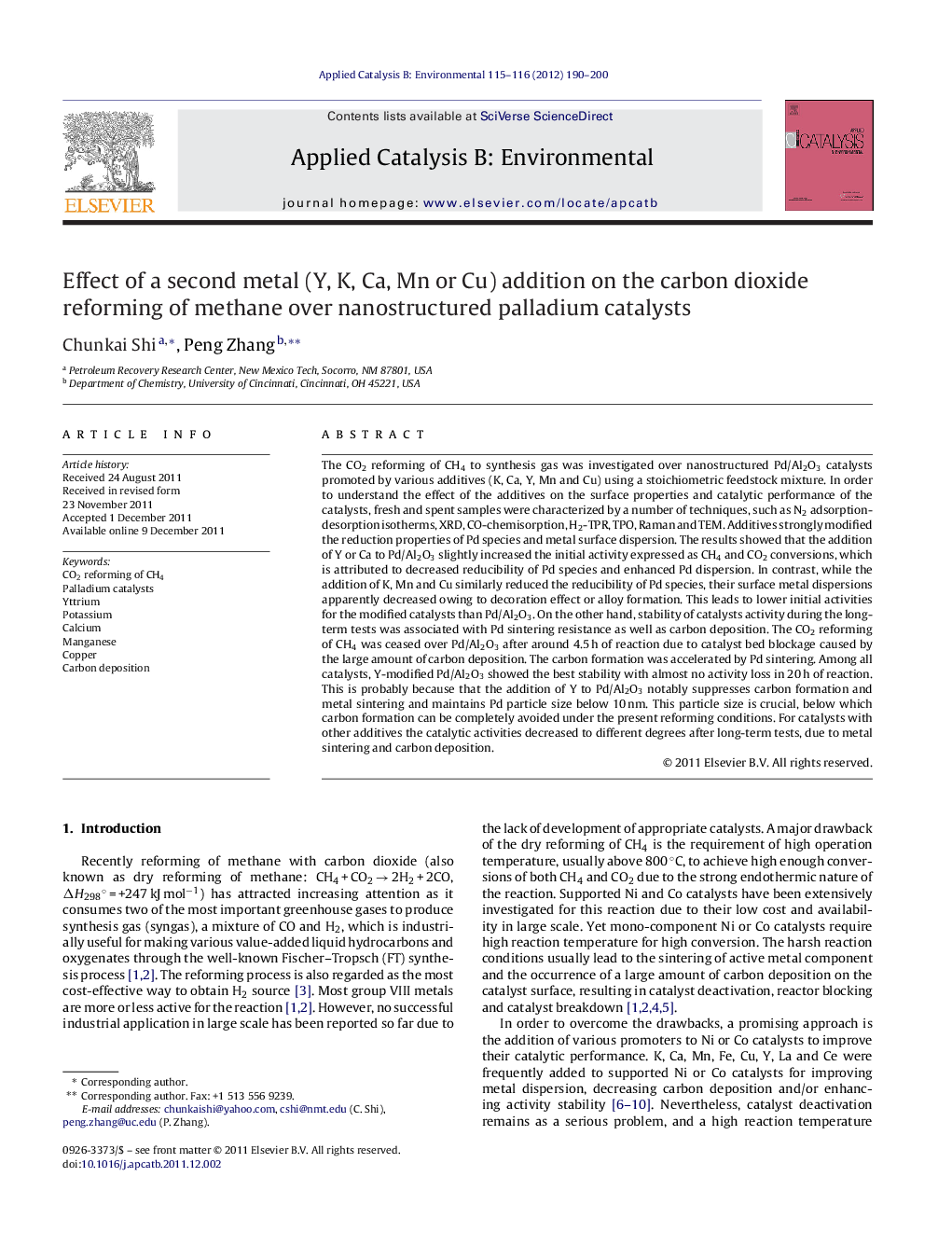| کد مقاله | کد نشریه | سال انتشار | مقاله انگلیسی | نسخه تمام متن |
|---|---|---|---|---|
| 46420 | 46439 | 2012 | 11 صفحه PDF | دانلود رایگان |

The CO2 reforming of CH4 to synthesis gas was investigated over nanostructured Pd/Al2O3 catalysts promoted by various additives (K, Ca, Y, Mn and Cu) using a stoichiometric feedstock mixture. In order to understand the effect of the additives on the surface properties and catalytic performance of the catalysts, fresh and spent samples were characterized by a number of techniques, such as N2 adsorption-desorption isotherms, XRD, CO-chemisorption, H2-TPR, TPO, Raman and TEM. Additives strongly modified the reduction properties of Pd species and metal surface dispersion. The results showed that the addition of Y or Ca to Pd/Al2O3 slightly increased the initial activity expressed as CH4 and CO2 conversions, which is attributed to decreased reducibility of Pd species and enhanced Pd dispersion. In contrast, while the addition of K, Mn and Cu similarly reduced the reducibility of Pd species, their surface metal dispersions apparently decreased owing to decoration effect or alloy formation. This leads to lower initial activities for the modified catalysts than Pd/Al2O3. On the other hand, stability of catalysts activity during the long-term tests was associated with Pd sintering resistance as well as carbon deposition. The CO2 reforming of CH4 was ceased over Pd/Al2O3 after around 4.5 h of reaction due to catalyst bed blockage caused by the large amount of carbon deposition. The carbon formation was accelerated by Pd sintering. Among all catalysts, Y-modified Pd/Al2O3 showed the best stability with almost no activity loss in 20 h of reaction. This is probably because that the addition of Y to Pd/Al2O3 notably suppresses carbon formation and metal sintering and maintains Pd particle size below 10 nm. This particle size is crucial, below which carbon formation can be completely avoided under the present reforming conditions. For catalysts with other additives the catalytic activities decreased to different degrees after long-term tests, due to metal sintering and carbon deposition.
Y-modified nanostructured Pd/Al2O3 catalyst shows the highest initial activity and the best long-term stability with no activity loss for carbon dioxide reforming of methane, owing to its best Pd dispersion, the strongest capability of both metal sintering and coking resistances.Figure optionsDownload as PowerPoint slideHighlights
► The activity and stability of catalyst depend on its Pd dispersion, metal sintering and carbon resistance.
► Pd/Al2O3 has high initial activity but it suffers from very severe carbon deposition and quickly deactivates.
► Pd5Y/Al2O3 shows the highest initial activity and the best stability with no activity loss.
► Catalysts with added K, Ca, Mn or Cu additives drop the catalytic activities to different extent after long terms runs.
► The Pd particle size of 10 nm is crucial below which carbon formation can be totally avoided.
Journal: Applied Catalysis B: Environmental - Volumes 115–116, 5 April 2012, Pages 190–200